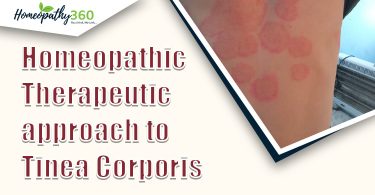ABSTRACT: In India the topic of menses is still a subject surrounded by taboos, misconceptions, blind beliefs and negative attitudes. Although menstruation is a natural process, still it is linked with several misconceptions and practices. It indicates the fertile period of every woman’s life and not only that it is equally responsible for production of ovum and preparation of uterus for pregnancy. In many parts of India menstruation is still considered to be dirty and impure. The only way to overcome all false beliefs and taboos is by educating and imparting knowledge to both men and women about this sensitive issue. Homoeopathy has a great scope in dealing with this. The guide to the selection of individualized homoeopathic medicine is totality of symptoms.
KEYWORDS: Health indicator, Homoeopathy, Individualization, Menstruation, Taboo.
ABBREVIATION: USG: Ultrasonography; HSG: Hystero-salpingography; TVS: Trans-vaginal sonography; MRI: Magnetic Resonance Imaging; RTI: Reproductive Tract Infections; MDG: Millenium Development Goal; PMS: Premenstrual Syndrome; Q: Mother Tincture.
INTRODUCTION: Adolescence in girls has been recognized as a special period signifying the transition from girlhood to womanhood. The attainment of Puberty in the human female is indicated by the establishment of menstruation, and is the epoch at which she fully enters on that general development and growth which marks the onset of her being capable of bearing children. Menstruation is the visible manifestation of cyclic physiologic uterine bleeding due to the shedding of endometrium, from puberty to menopause (except pregnancy).1 Menstrual bleeding patterns are considered relevant indicators of reproductive health and changes in bleeding pattern have impact on the quality of life for women.2 Variations in the sex hormone levels are associated with various bleeding patterns, as hormones influence the proliferation and shedding of endometrial lining of uterus.3 Feeding habits as well as mental stress and physical activities are equally responsible for affecting the menstrual health.4
WHAT IS MENSTRUATION?1
It is one of the 4 phases of the menstrual cycle; followed by follicular, ovulatory and luteal phase. The contents are dark altered blood, mucus, vaginal epithelial cells, fragments of endometrium, prostaglandins, enzymes and bacteria. Average duration is about 4-5 days. Average length is 28days and amount of blood lost: approx 20 to 80 ml (average 35ml).
TABOOS IN INDIA: It is generally considered as unclean in Indian society and thus has excluded women from many aspects of socio-cultural life.5 The origin dates back to the Vedic times, which states that “Lord Indra murdered a Brahmana- which was taken upon by women as a part of Indra’s guilt, so this appears every month as menstrual flow.”6 Women are prohibited from participating in normal life while menstruating. Prohibited entry in the kitchen and puja room is an important fact and not only that but they are also refrained from offering prayers and touching holy books.7,8 It was also believed that menstrual blood can be misused for black magic so the women must wash the cloth wore during menses at night time itself, when everyone is sleeping.9
Social prohibitions and the negative attitude of parents in discussing the related issues openly, have blocked the access of girls to the right kind of information regarding menses10.Due to cultural beliefs and restrictions, girls are often not informed adequately about the realities and facts of menses. As a result they feel subnormal, traumatized or diseased11.
VOCABULARY:
• MENARCHE: first occurrence/ onset of menstruation.1
• MENOPAUSE: permanent cessation of menstruation at the end of reproductive life due to loss of ovarian follicular activity. Point of time when the last and final menses occur. It is confirmed clinically if for consecutive 12months there is cessation of menses.1
• AMENORRHOEA: absence of menstruation.
• MENORRHAGIA: cyclical bleeding at normal intervals, with bleeding either excessive in amount or duration or both.
• POLYMENORRHOEA/ EPIMENORRHOEA: cyclical bleeding where the cycle is reduced to an arbitrary limit of less than 21days and remains constant at that frequency.
• OLIGOMENORRHOEA: menstrual bleeding occurring over an interval of 35days and remains constant at that frequency.
• HYPOMENORRHOEA: menses is unduly scanty and lasts for less than 2 days.
• DYSMENORRHOEA: painful menses of sufficient magnitude to incapacitate day-to-day activities.
• METRORRHAGIA: irregular, acyclic bleeding from uterus.
INVESTIGATIONS: 1,12
1. USG/ HSG
2. Pregnancy test
3. Hormonal profiling
4. Karyotyping
5. TVS
6. Bleeding profile
7. Culture for gonorrhea and Chlamydia.
8. Endometrial biopsy
9. Hysteroscopy
10. MRI.
MANAGEMENT MEASURES:
Hygiene related practices of women during menses are of considerable importance as it has a health impact in terms of increased vulnerability to RTI.
• Good hygienic practices such as the use of sanitary pads and adequate washing of the genital area are essential. Menstrual hygiene and management directly contributes to the MDG 13.
• Studies have found woman who exercises regularly suffers less from menstrual cramps and pain and mood disturbances- “happy hormone”: serotonin13.
• Diet rich in omega-3 fatty acids, calcium and Vitamin D, B1, B6, E; and low in animal fats, salt and caffeine reduces troublesome PMS. Lean meat diet is an important source of iron and protein especially for women with heavy periods14.
• Sound sleep is must as poor sleep patterns contribute to mood disturbances, hormone irregularities and disturbed cycles14.
NATIONAL HEALTH PROGRAMMES:
• MENSTRUAL HYGIENE SCHEME (MHS) – The Ministry of Health & Family Welfare has introduced scheme for promotion of menstrual hygiene among adolescent girls in age group in rural areas. Its objectives are to increase awareness among adolescent girls about menstrual hygiene, to facilitate use of sanitary napkins and to ensure safe disposal of them in an eco friendly manner.15
• MESTRUAL HYGIENE MANAGEMENT (MHM) – Government of India has incorporated MHM into national policies and programs for improving health, well being, and nutritional status of adolescent girls and women as well as to reduce school absentism. “Swachh Bharat : Swachh Vidyalaya” campaign has been launched in every school of India along with WASH facilities. MHM is an integral part of Swachh Bharat Mission. Ministry of Drinking water and Sanitation has published operational guidelines for the improvement of MHM in the country.16,17
Efforts have been made by installing napkin- vending machines at schools and for safe disposal mechanisms low-cost incinerators are attached to the girls’ toilet in schools. On March 8, 2018: Government has launched 100% oxy-biodegradable sanitary napkins “Suvidha”, available at Pradhan Mantri Bhartiya Janaushadhi Pariyojana Stores.16
HOMOEOPATHIC APPROACH:
In Aphorism 94 footnote of Organon of Medicine: “In chronic diseases of females it is specially necessary to pay attention to…and the state of the menstrual discharge. With respect to the last named more particularly, we should not neglect to ascertain if it recurs at too short intervals, or is delayed beyond the proper time, how many days it lasts, whether its flow is continuous or interrupted, what is its general quality, how dark is its color.”18
Functional disturbances in uterus and appendages indicate Psora in the background”. Sycotic element has specific action upon endometrium and uterine appendages. Syphilis seldom attacks ovaries or uterus.19,20,21
Menstrual anomalies of tubercular patients21:
• Always exhaustive, prolonged and copious flow.
• Bright red color of the blood.
• Associated with vertigo, fainting, pallor of face, worse rising from recumbent position.
• Appears too soon, every two or three weeks.
• May or may not be painful.
• Induces anaemia in young girls.
• Occasionally appear with diarhhoea, epistaxis, febrile states, optical illusions, roaring in ears, sensitiveness to noise, loss of appetite, abdominal pains, nausea and bitter vomiting; with extremities usually cold.
Nature of menses characterizing Psora21:
• Scanty flow; bland nature.
• Too short duration.
• Dysmennorhoea clearly at puberty and at climacteric period.
• Pains sharp but never colicky.
• Small blood clots.
Nature of menses characterizing Sycosis21:
• Pains spasmodic, extremely sharp, colicky, coming in paroxysms.
• Flow often only with the pains.
• Offensive.
• Stringy.
• Large clots.
• Dark colored even black.
• Flow acrid, burning, biting the pudendum.
“The sexual and reproductive organs of women are not the less free from the influence of miasmatic action; indeed they have become great centre of physiological, psychological, pathological and therapeutic study.21”
THERAPEUTICS:22,23,24,25
AMENORRHOEA:
If there is no appearance of the flow at the time that the next period is due; especially if there is a sinking sensation at 11 a.m., flushes of heat, hot head, cold extremities- Sulphur
Menses retarded, suppressed. Functional amenorrhoea of young girls with backache- Senecio Aureus
If the suppression took place in consequence of fright and if a remedy can be administered without loss of time; often restore the menses very speedily- Aconite
Delayed menses in young girls, with chest symptoms or ascites. Difficult first menstruation. Pains from back pass down through gluteal muscles, with cutting in abdomen. When Natrum mur though apparently indicated but fails- Kali Carb
MENORRHAGIA:
Too early, too profuse, too long lasting, with bearing down, prolapse, rectal urging- Aloes Soc
Especially due to subinvolution of uterus- Cinnamomum
Intermittent bright red bleeding, < motion; especially during menopause with irritation of rectum and bladder- Erigeron
Profuse haemorrhage; fluids and non-coagulable- Geranium Maculatum
Haemorrhage with colic and cramps; effects of suppressed uterine diseases. Every alternate period profuse- Thlaspi Bursa Pastoris
Bright red bleeding with pain in lower abdomen- Menispernum Canadense
Premature and profuse menses, with labour-like pains. Leucorrhoea due to weakness and anaemia. Habitual tendency to abortion. The patient is tired all time- Aletris Farinosa
If no other remedy is specially indicated, and the loss of blood amounts to a real haemorrhage, the first remedy use of always Ipecacuanha, which arrest the flow of blood in very many cases.
DYSMENORRHOEA:
Spasmodic dysmenorrhoea is often relieved by Chamomilla Q twenty drops in half a tumbler of water. Give one teaspoon each hour until relieved.
A general remedy for cramps. Spasmodic and congestive affections, dependent upon ovarian or uterine origin. Aching in sacrum and pubes, with pain in anterior muscles of thighs. Worse: lying on affected side; better: in open air and resting- Viburnum Opulus
Ovarian neuralgia, with pain in loins and lower abdomen; worse, left side, extending down the thigh, along genitocrural nerves- Xanthoxylum
Boring pain in ovary. Bearing-down cramps, causing her to bend double. Must draw up double, with great restlessness- Colocynthis
Menses: flow dark, stringy; pains when flow begins. Pain in paroxysms, relived by hot applications, Magnesia phos 6X in a tablespoonful of hot water every ten minutes
REPERTORIAL APPROACH:
• GENITALIA FEMALE, MENSES, absent, amenorrhoea: Aur, Carb-s, Con, Dulc, Ferr, Ferr-i, Graph, Kali-c, Lyc, Puls, Senec, Sep, Sil, Sulph, Tub. 26
• GENITALIA FEMALE, MENSES, scanty: Am-c, Carb-s, Con, Cycl, Dulc, Graph, Kali-c, Lach, Mang, Nat-m, Phos, Puls, Seneg, Sep, Sulph.26
• MENSTRUATION, TIME AND QUANTITY OF MENSTRUAL DISCHARGE , Profuse after delay: Lach27
• MENSTRUATION, TIME AND QUANTITY OF MENSTRUAL DISCHARGE , Profuse after excitement, the least: Calc.c.27
• MENSES, delayed in girls, first menses: Caust, Graph, Kali-c, Nat-m, Puls, Senec.26
• MENSES, frequent, too early, too soon: Ambr, Ars, Bell, Bov, Bry, Calc, Carb-an, Carb-v, Cham, Cocc, Cycl, Ferr, Ip, Kali-ars, Kali-c, Lac-c, Mag-m, Mang, Nat-m, Nux-m, Nux-v, Phos, Plat, Rat, Rhus-t, Sabin. 26
• MENSES, painful, dysmennorhoea: Bell, Cact, Calc-p, Cham, Cimic, Kali-c, Psor.26
• GENITALIA FEMALE, METRORRHAGIA, between the menstrual periods: Calc, Cham, Ip, Phos, Rhus-t, Sabin, Sil. 26
CONCLUSION:
Menstruation is an important indicator of current and potential health problems. It is very necessary to evaluate the underlying factors associated with irregularities of menstruation to determine appropriate preventive, management and treatment strategies. A comprehensive health education programme is very much required to remove various misconceptions and taboos associated with menstruation. A detailed multidimensional study about the variation in colour, duration, texture of menses is to be done so that it can help individualizing a case and thus aid in finding the similimum for a case.
REFERENCES:
1. Dutta DC. Textbook of Gynaecology including Contraception. 6th edition. Kolkata: New Central Book Agency(P) Ltd. 2013.
2. Dasharathy SS, Mumford SL, Pollack AZ, Perkins NJ, Mattison DR, Wende JW, et.al. Menstrual Bleeding patterns Among Regularly Menstruating Women. American Journal of Epidemiology. 2012. Mar 15; 175(6): 536-545.
3. Nussey SS, Whitehead SA. Endocrinology: An Integrated Approach. Oxford, United Kingdom: BIOS Scientific Publishers Limited; 2001.
4. Negi P, Mishra A, Lakhera P. Menstrual abnormalities and their association with lifestyle pattern in adolescent girls of Garhwal, India. Journal of Family Medicine and Primary Care. 2018. Jul-Aug;7(4):804-808.
5. Garg S, Anand T. Menstruation related myths in India: strategies for combating it. Journal of Family medicine and Primary Care.2015. Apr-Jun; 4(2): 184-186.
6. Chawla J. Matrika- The Mythic Origins of the Menstrual Taboo in the Rig Veda. 1992.
7. Puri S, Kapoor S. Taboos and Myths associated with women health among rural and urban adolescent girls in Punjab. Indian Journal of Community Medicine. 2006; 31(4):4.
8. Ten VT. Menstrual hygiene: A neglected condition for the achievement of several millennium development goals. Europe External Policy Advisors. 2007.
9. Sommer M, Kjelle’n M, Pensulo C. Girl’s and women’s unmet needs for menstrual hygiene management (MHM): The interactions between MHM and sanitation system in low- income countries. Journal of Water, Sanitation and Hygiene for Development.2013, Sep1; 3(3): 283-297.
10. Thakre SB, Thakre SS, Reddy M, Rathi N, Pathak K, Ughade S. Menstrual Hygiene: Knowledge and Practice among Adolescent School Girls of Saoner, Nagpur District. Journal of Clinical and Diagnostic Research. 2011, Oct1; 5(5): 1027-33.
11. Kaur R, Kaur K, Kaur R. Menstrual Hygiene, Management, and Waste Disposal: Practices and Challenges Faced by Girls/ Women of Developing Countries. Journal of Environment and Public Health. 2018, Feb 20; 9pages.
12. Hans SK. Disorders of Menstruation. In: Self Assessment & Review Gynaecology. 11th edition. New Delhi. Jaypee The Health Sciences Publisher. 2018.
13. Pandit D, Bhattacharyya PK, Bhattacharya R. Menstrual Hygiene: Knowledge and practice among adolescent school girls in rural areas of West Bengal. IOSR J Dent Med Sci Ver. 2014; 3:13.
14. Park K. Textbook of Preventive and Social Medicine. 25th edition. Pune. M/s Banarsidas Bhanot; 2019.
15. National Health Mission. Menstrual Hygiene Scheme. Ministry of Health and Family Welfare, Government of India; 2011.
16. Sinha RN, Paul B. Menstrual hygiene management in India: The concerns. Indian Journal of Public Health. 2018; 62; 71-4.
17. Ministry of Drinking Water and Sanitation, Government of India. Menstrual Hygiene Management- National Guidelines; 2015.
18. Hahnemann S. Organon of Medicine, translated from the 5th edition, with an appendix by R.E.Dudgeon with additions and alterations as per 6th edition translated by William Boericke, and Introduction by James Krauss. New Delhi. B.Jain Publishers. 2013.
19. Roberts HA. The Principles and Art of Cure by Homoeopathy. Reprinted. New Delhi: B.Jain Publishers, 2014.
20. Kent JT. Chronic Diseases- Sycosis. In: Lectures on Homoeopathic Philosophy.7th edition. Reprinted.New Delhi: B.Jain Publishers, 2013:180.
21. Allen JH. The Chronic Miasms. Reprinted. Kolkata: Rup Publication, 2013.
22. Allen HC. Keynotes and Characteristics with Comparisons of some of the Leading Remedies of the Materia Medica with Bowel Nosodes. 8 th edition. New Delhi: B.Jain Publishers, 2011.
23. Boericke W. Pocket Manual of Homoeopathic Materia Medica and Repertory. Reprinted. New Delhi: B.Jain Publishers, 2006.
24. Clarke JH. The Prescriber. 7th Impression. Reprinted. New Delhi. B. Jain Publishers (P) Ltd. 2015.
25. Jahr GHG. Therapeutic Guide: The most important results of more than forty years’ practice. 8th Impression. Reprinted. New Delhi. B. Jain Publishers (P) Ltd. 2019.
26. Kent JT. Repertory of Homoeopathic Materia Medica. 6th American edn. New Delhi: B.Jain Publishers, 2005:745.
27. Minton H. Uterine Therapeutics. Reprinted. New Delhi: B.Jain Publishers, 1991.
ABOUT AUTHORS:
Dr. S.Seetha Lakshmi, B.H.M.S; PG Scholar of Dept. of Organon of Medicine, National Institute of Homoeopathy, Kolkata.
Dr. Siddhartha Pal, M.D. (Hom.) National Institute of Homoeopathy, Kolkata; J.R.F., Dr. Anjali Chatterjee Regional Research Institute, Kolkata.





